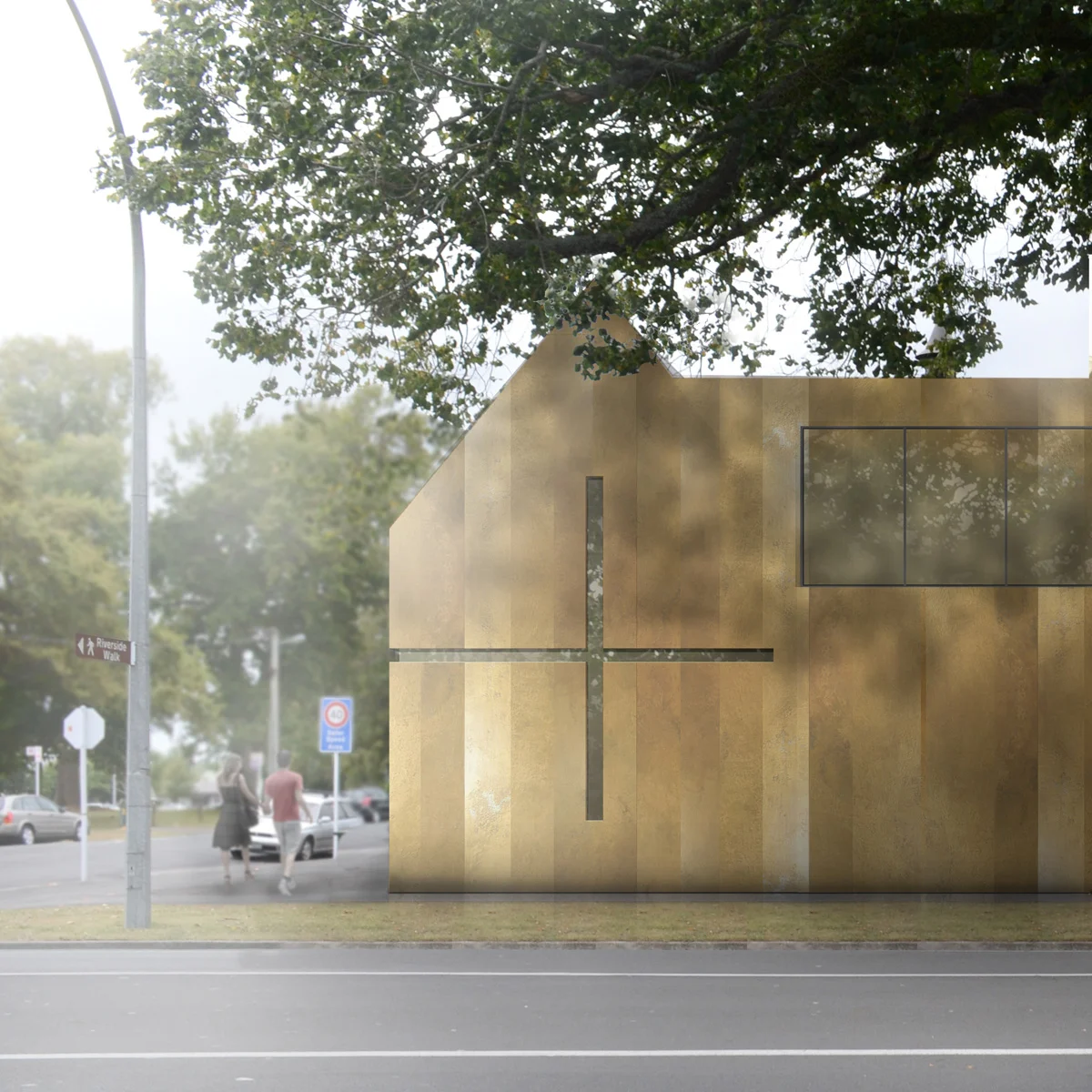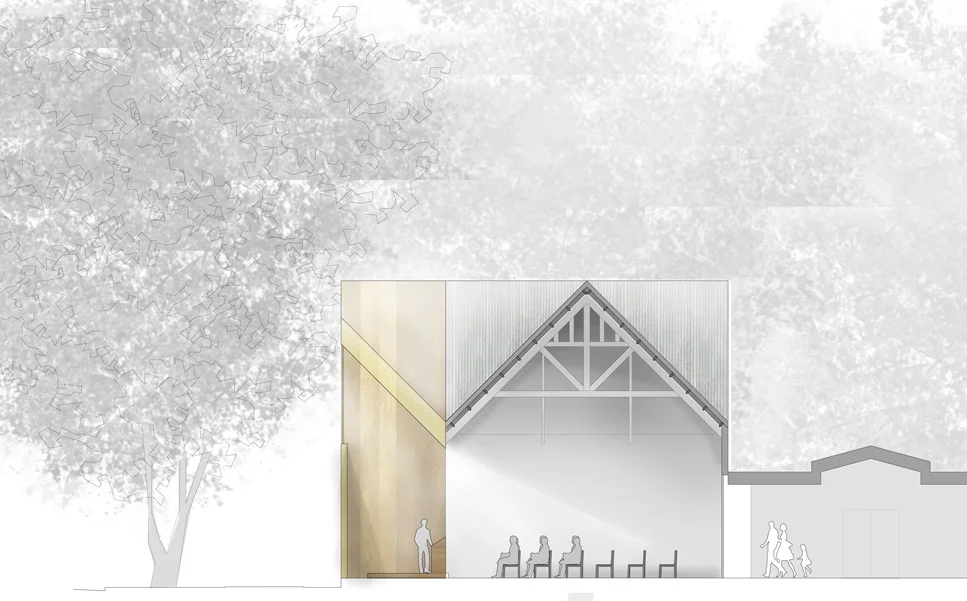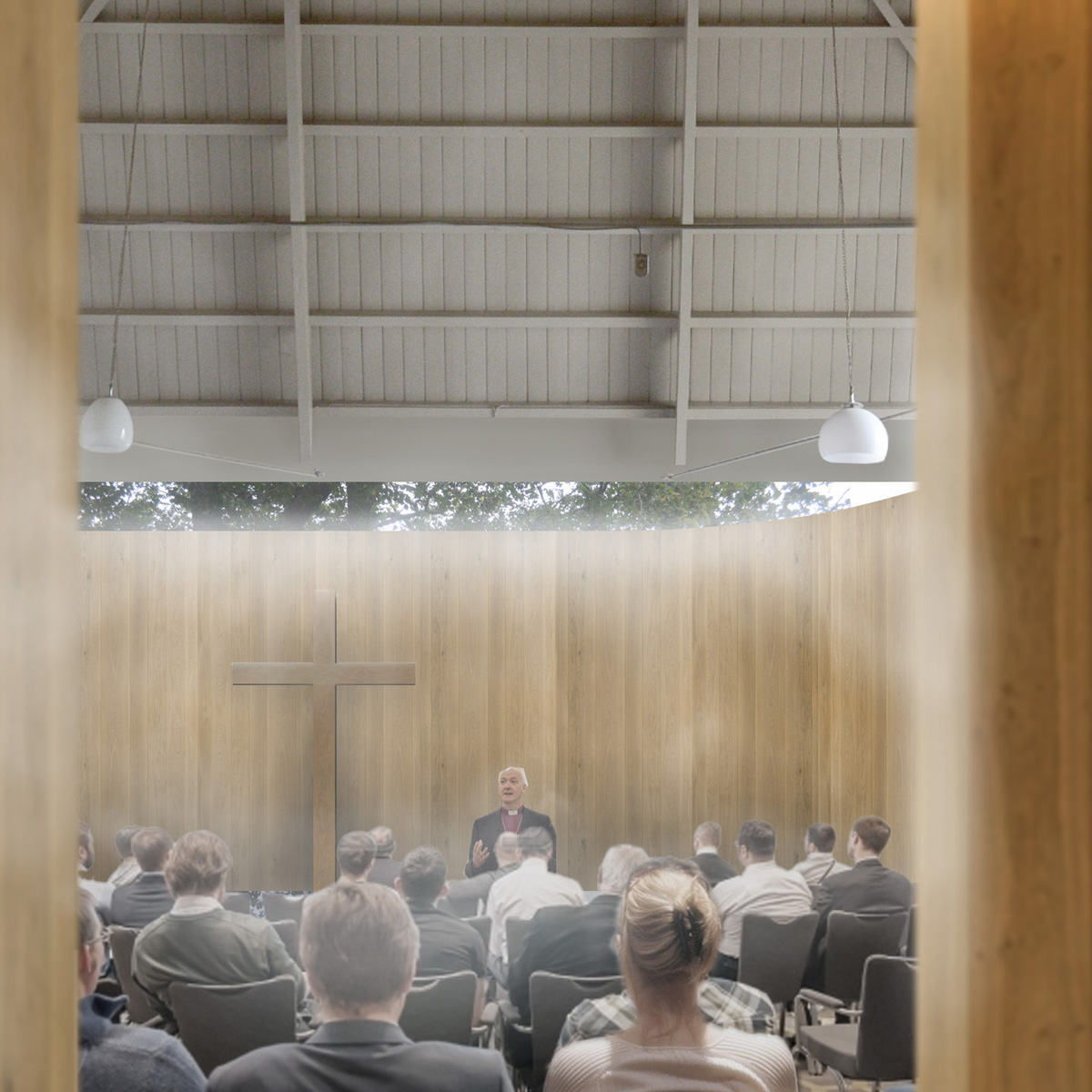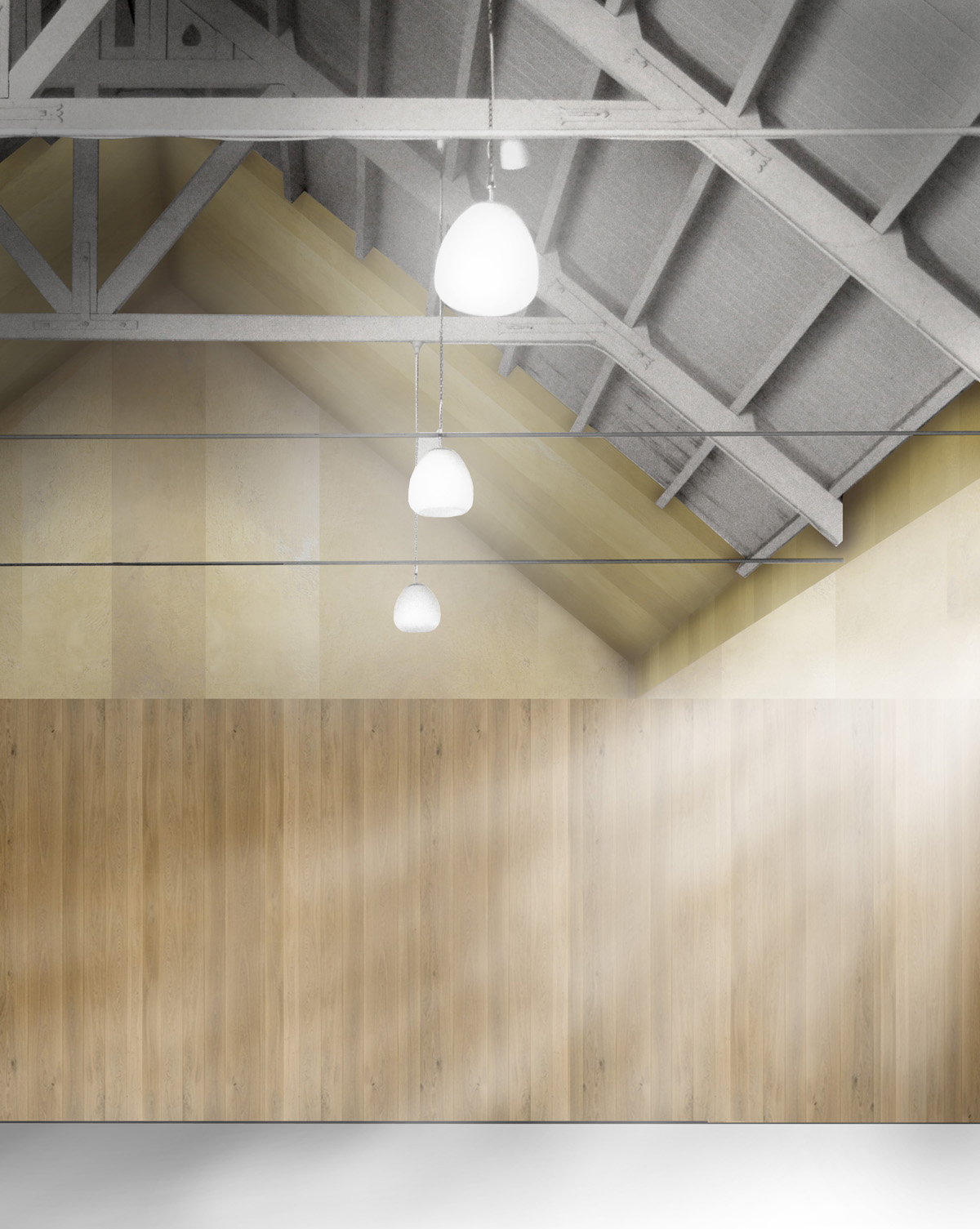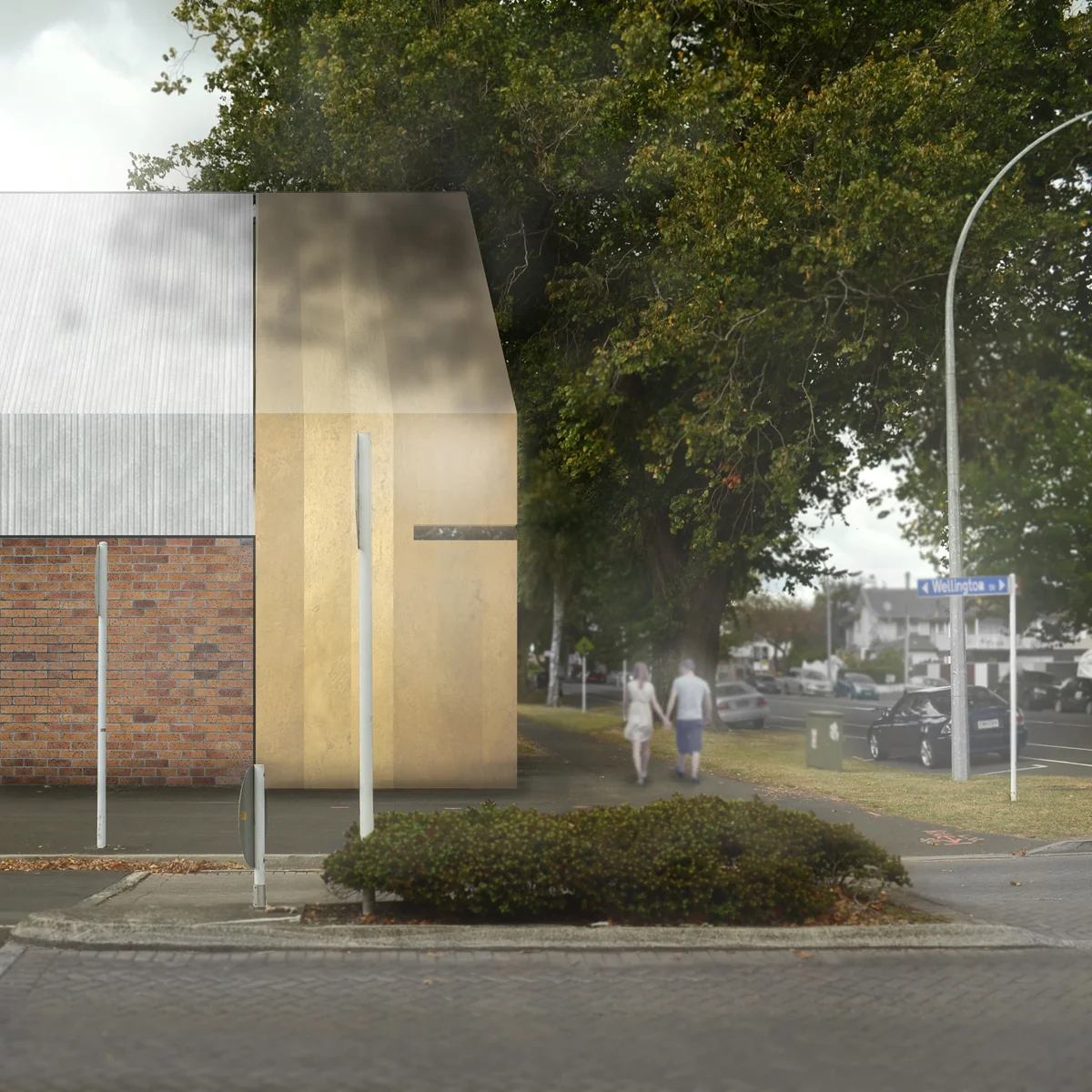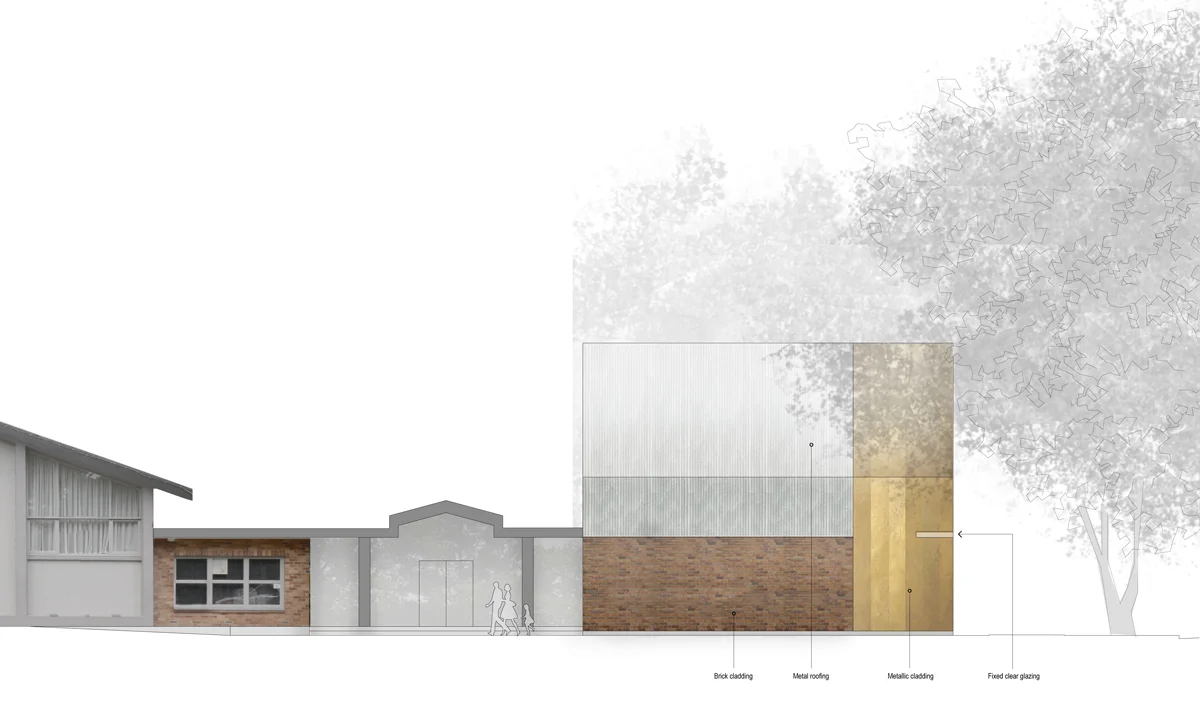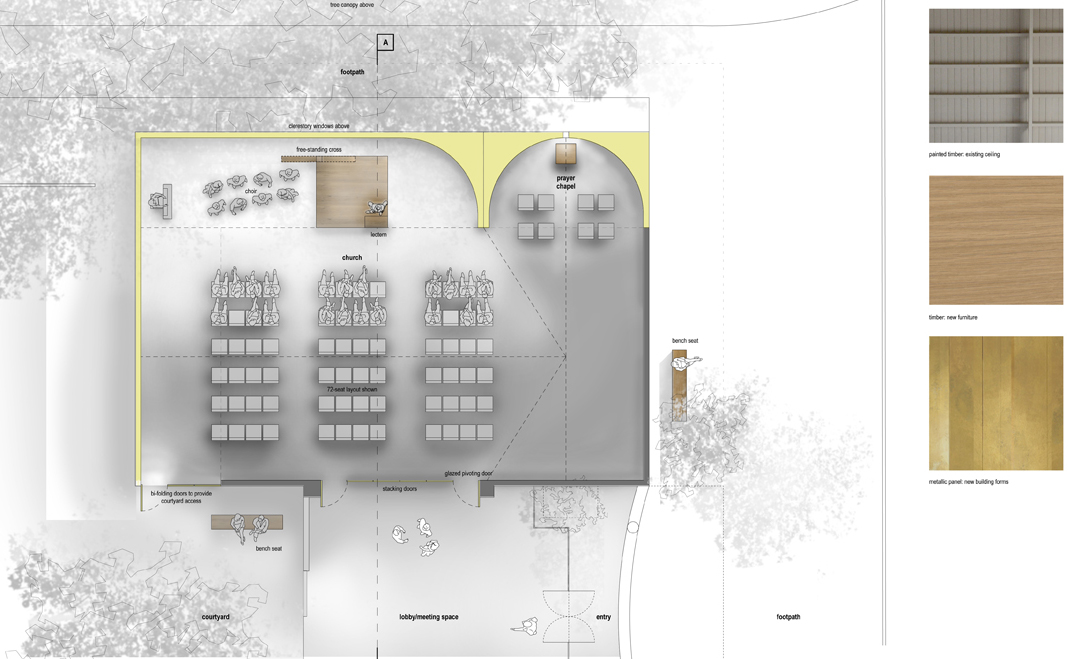Modern Form
In this project an existing concrete-walled, timber-roofed church—disused due to structural inadequacies—is reconfigured and enlarged to provide a useable, modern church. Instead of proposing the complete demolition of the existing building and its inherent historical qualities, the design instead proposes the retention of the essential element of the building, a finely crafted timber ceiling, which acts as a generator of space and form for the new, enlarged building.
As a place of worship, the building's purpose and importance should be clearly conveyed to the community; as a religious building, the use of traditional religious building forms is appropriate and beneficial. Whilst traditional building forms are conducive to worship, the current building lacks natural light and a visual focus to the space. The use of modern forms for the enlarged parts of the space—derived from the geometry of the original building—creates the opportunity for large clerestory glazing which provides the congregation a calming and meditative view of an adjacent tree canopy and the sky above. This glazing provides the interior with both soft natural light and a visual focus to the space.
The existing ceiling is curated by painting the timber trusses, purlins and sarking light grey. To the exterior, the existing corrugated metal roofing is retained but stripped of all ornamental detail, allowing the form of the building to be more clearly presented. New brick walls create a visual relationship with existing brick walls on an adjacent building, and draw the church into a relationship with the adjacent building complex.
Whilst the new building forms match the existing structure in shape and geometry, they are clad internally and externally in anodised aluminium panels, providing a clear differentiation between the original and new building elements. The aluminium panels provide a bright and precious appearance, signifying the importance of the building to the congregation and making it highly visible to the community.
The combination of forms and materials presents a building which is neither traditional nor plainly 'modern' (in the way of contemporary 'warehouse' church buildings). Instead, it provides a place which can be understood as a modern interpretation of a traditional form.
Modern Form, Hamilton, New Zealand.
